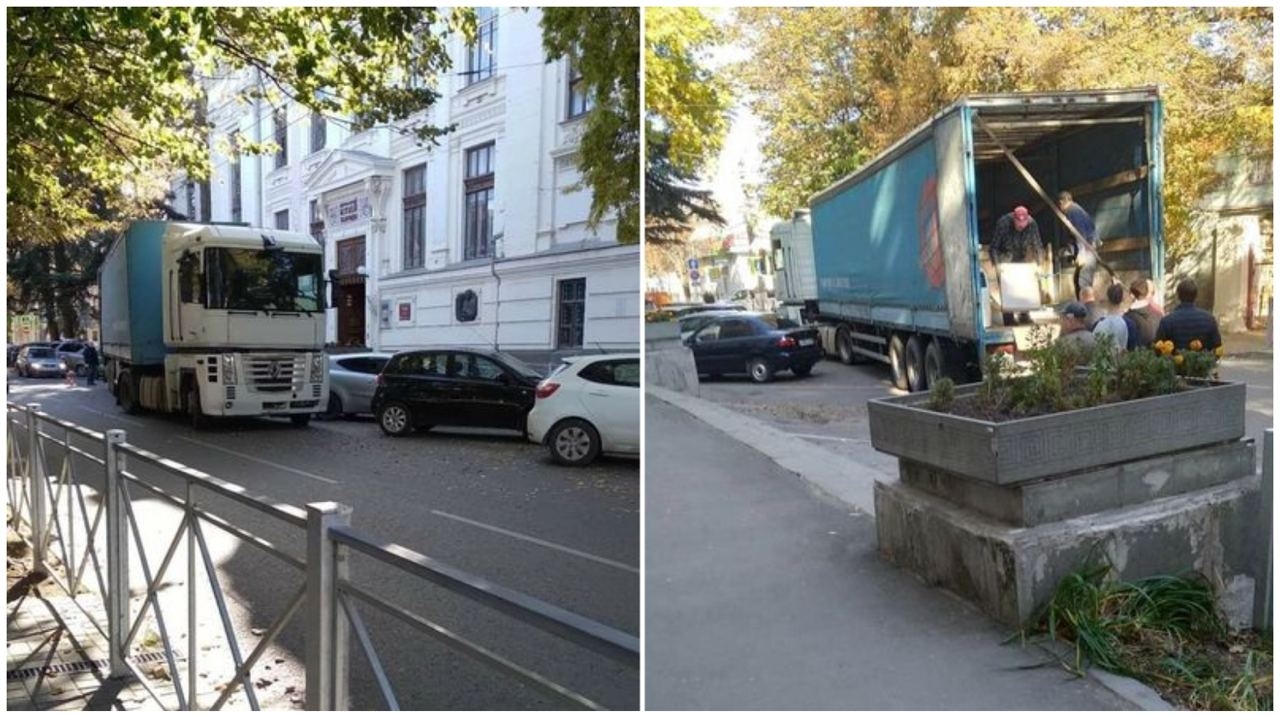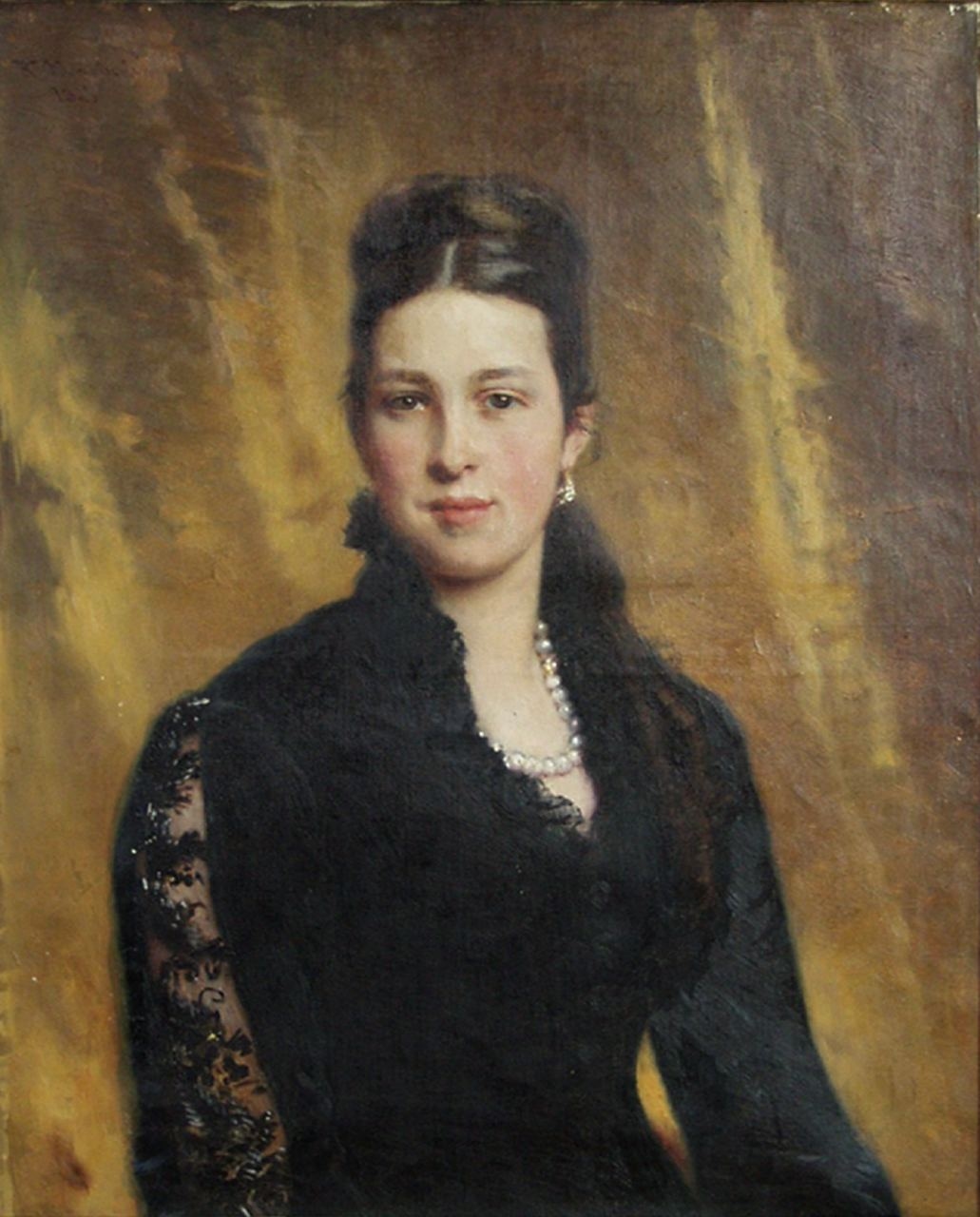Empty Kherson art museum in despair after entire collection stolen by Russia

KHERSON — Housed in a grand imperial building with a view out onto the Dnipro River, the Kherson Fine Arts Museum once hosted one of the richest collections in all of Ukraine.
As with the rest of Kherson, which had its electricity infrastructure destroyed by withdrawing Russian forces in early November, the halls of the museum are now cold and dark.
Far more tragically, the Kherson Fine Arts Museum has been emptied of all its works by Russian officials. Of the over 14,000 works in its collection, barely anything remains. Russia’s withdrawal from Kherson was a well-planned operation, a key component of which was the looting of anything deemed to be of financial or cultural value. The Russian campaign of theft was comprehensive and wide ranging, covering everything from hospital equipment and public monuments to an unfortunate raccoon living in Kherson Zoo.
Stolen equipment and monuments can be replaced, but priceless artworks cannot. All that remains now of the once flourishing museum is the building itself, and inside it, the two last staff members who refused to collaborate with Russia.
Speaking to the Kyiv Independent on Nov. 16 in her personal office at the museum, director Alina Dotsenko, 72, steered clear of her old work desk, shuffling closer to the window where the last dim light of the day was making its way in.
“I still can’t bring myself to sit where they sat,” she said, referring to her Russian-installed replacement, a local singer called Natalia Desiatova, who oversaw the looting of the museum’s collection.

Joy upon the liberation of Kherson comes with a bitter aftertaste for Dotsenko, who had initially fled to Ukrainian-controlled territory in early May, after she had refused to host a Victory Day event held by occupation authorities in the museum.
Dotsenko returned to Kherson in a Security Service convoy on Nov. 12, a day after Ukrainian troops entered the city, only to arrive at work for all her fears about the museum to be confirmed.
“Are you trying to bring me to tears again?” she said when asked to recall the day. “I haven’t really lived these last few months, I have only worried and worried."
From intricate 17th century Orthodox icons to works by a multitude of Ukrainian, Russian, and other European masters including Ivan Aivazovsky, Vasily Polenov, Auguste von Bayer and Peter Lely, the museum’s collection was Dotsenko’s pride and joy.
“We didn't expand our collection for the sake of money or status,” she said, “but because of what it meant to the city.”
The museum’s collection was already in storage when Russia’s full-scale invasion was launched on Feb. 24, as the building was undergoing major restoration works. Calls by Dotsenko to evacuate the collection fell upon deaf ears as Kherson fell to Russian forces in a matter of days.
Who is responsible?
The collection of the Kherson Fine Arts Museum joins the Arkhip Kuindzhi Museum in Mariupol among others in the list of priceless cultural assets Ukraine has lost due to Russia’s invasion. These losses could have been prevented by well-prepared evacuation plans put into place when Russia’s invasion became an increasing likelihood.
The evacuations that never happened are the subject of an ugly blame game between the Ukrainian Ministry of Culture and local authorities, with both accusing the other of inaction in evacuating priceless museum collections before it was too late.
“Local authorities, managers, and mayors, and governors told me exactly this: ‘There is no need to sow panic for the local population, everything is fine with us,’” said Culture and Information Minister Oleksandr Tkachenko in an interview to Ukrainian Pravda.
Pavlo Andriushchenko, advisor to the Mayor of Mariupol, responded to Tkachenko’s interview on Telegram, reflecting the blame on the ministry.“It would have been great to see at least one piece of paper signed by him, ordering the evacuation of the valuables of Mariupol, overruling the restrictions for the movement of valuables approved by the ministry,” Andriushenko wrote.
“All the collections of Mariupol were lost because of one thing only - because of the reluctance of the ministry to deal exclusively with this issue.”
For the Kherson collection, the damage has been done. A few days after the collection was removed in preparation for the Russian withdrawal, photos emerged on Facebook of dozens of works from the collection stacked up in storage in the Central Taurida Museum in occupied Simferopol, Crimea.
Enemies inside
In almost any town or city occupied by Russia in Ukraine, locals are found who, motivated by money, pro-Russian sentiments, or bitterness towards colleagues, are willing to cooperate with the occupying authorities. In the case of the Kherson Fine Arts Museum, the presence of one or two collaborants was pivotal in the stealing of the museum’s collection and data.
In the early weeks of the occupation of Kherson, Dotsenko quickly grew concerned that some of the museum staff could soon betray the collection to Russia. In some cases, Dotsenko sent them on paid leave simply so that they wouldn’t be present on the museum grounds.
“I had never trusted them,” she said. “I grew up a daughter of a border guard, so I had my eyes on them all the time.” One collection worker, Maryna Zhylina, was even fired last year by Dotsenko, who was increasingly concerned by her openly pro-Russian position. “I had imagined she would leave to Russia, she had a daughter in Moscow,” Dotsenko said. “She was a good worker but pro-Russian from head to toe.”

With the core of the staff remaining loyal, it took several months before Russian occupation authorities got around to taking over the museum, unlike the neighboring Regional Museum, where director Tetiana Bratchenko immediately chose to collaborate.
“Just see how much we held out!” Dotsenko said with pride. “They were in the other museum by the beginning of March, but here, not until July!”
When that day came on July 19, Dotsenko had long left Kherson, and the museum was guarded by accounting and archive worker Hanna Skrypka, 56, a loyal confidant of Dotsenko’s. According to Skrypka, armed Russian men came to the museum’s doors and demanded the keys from her, “to open the space and prepare it for the arrival of the new director.” Requests by Skrypka to show some authorizing documents were denied.
After half an hour of stalling the soldiers, the new “director” Desiatova, arrived. Desiatova was joined by former colleague Anna Koltsova, who had confirmed to the Russians that the collection had not been moved as claimed by Dotsenko, and who had secretly saved copies of the museum’s electronic records on her personal computer before the invasion.
“As I understand it, this individual was towards the end of her life and was simply hoping for a taller pedestal to stand on than what she was given by Ukraine,” said Skrypka. “Traitors, plain and simple.”
Swift and systematic
It was not until the end of October, when the Russian occupation of Kherson was understood to be doomed, that the removal of the museum’s entire collection began.
“They were certain that they were here forever,” Dotsenko said, “but as soon as our soldiers started to come closer, they started to steal everything.”
Starting on Oct. 31, trucks began to line up outside the museum, accompanied by a mix of Russian soldiers, representatives of the Russian Ministry of Culture and Federal Security Service (FSB) officers in civilian clothes. “Everything that was in a visible location attracted their eye right away,” said Skrypka. “Since the so-called ‘colleagues’ of ours who knew where the most valuable artworks were being held, these pieces were taken first according to their instructions.”
Early in the occupation, Dotsenko and Skrypka had tried to hide some of the most valuable works, but the presence of pro-Russian colleagues, Koltsova and Zhylina, rendered these efforts pointless.
“I was trying first to show them some of the Russian artists that weren't as valuable to us personally, in the hope that that would satisfy them,” said Skrypka.
“But the two of them were always there over my shoulder, saying (to the FSB officers) 'well have a look at that shelf, why don't you pull out that one...'"
Two trucks were filled each day with artwork, frames often crudely stacked up against each other with zero care given to proper packaging and temperature controls.
According to Skrypka, the Russians didn’t speak much to her, only justifying their theft on the grounds of “saving” it from the Ukrainian advance, the same message used by local proxy authorities.“This collection that has been here for many decades, and you are "saving" it?” pondered Skrypka. “From whom? From the nation who is coming to liberate its own city?”
By the time Skrypka left the museum on Nov. 4, the removal of over 10,000 works had been accounted for, with more trucks still arriving. “I didn't say goodbye to them,” said Skrypka of her former colleagues. “They had planned a big feast to celebrate the completion of the emptying of the museum, and how could I sit and eat with my enemies?”
Dreams of justice
Though shelling of the city has intensified in the two weeks since liberation, residents on the streets of Kherson are largely optimistic that the rest of Ukraine’s occupied territories will be successfully liberated. Territory can be won back, but it is hard to look with the same optimism at the chances of returning the priceless artworks of the Fine Arts Museum in Kherson. A museum without its collection and archive is a museum without an identity, and the road ahead is uncertain.
While many of its works have been identified in the pictures from occupied Simferopol, it is not known whether the huge collection has been kept together in its entirety. Given the scale of the theft and lack of care shown to the works, it is not unlikely that some pieces disappeared into private hands on the way.
The museum may be empty, but Skrypka is not short of work. Together with Dotsenko, she must now create a comprehensive digital account of all the looted pieces. “We need to record everything that was taken, complete with photos,” she said, “so that if anything happens to show up on a border or at an auction, it can be identified.”

Beyond that, Ukraine’s only hope to return the stolen art, which is officially property of the Ukrainian state, is through international efforts now led by the Ministry of Culture. “When the time eventually comes for peace negotiations, this must be one of the first terms put forward: the return of all artefacts from looted museums,” Skrypka said. “Of course, they won't agree with it, but we need to be loud about it anyway while other channels are pursued.”
For the foreseeable future though, the Kherson Fine Arts Museum as it once was has ceased to exist.
“I don't have any words to describe their relationship to history, to culture, to human life,” said Skrypka.
“What can you teach children about culture, about respecting other cultures if you not only can't protect your own culture, but simply steal from others and call it your own?”
____________________
Note from the author:
Hi, I'm Francis Farrell, who wrote this piece from on the ground in liberated Kherson. The story of the Fine Arts Museum in Kherson is the convergence of two trends we have observed since the start of the full-scale invasion: the systematic looting of anything of value from occupied areas and the destructive, careless approach to cultural assets shown by Russian occupying forces. As winter arrives in Ukraine and the nation is plunged into darkness, we will continue to cover what is going on for the world. Please consider continuing to support our reporting.


















